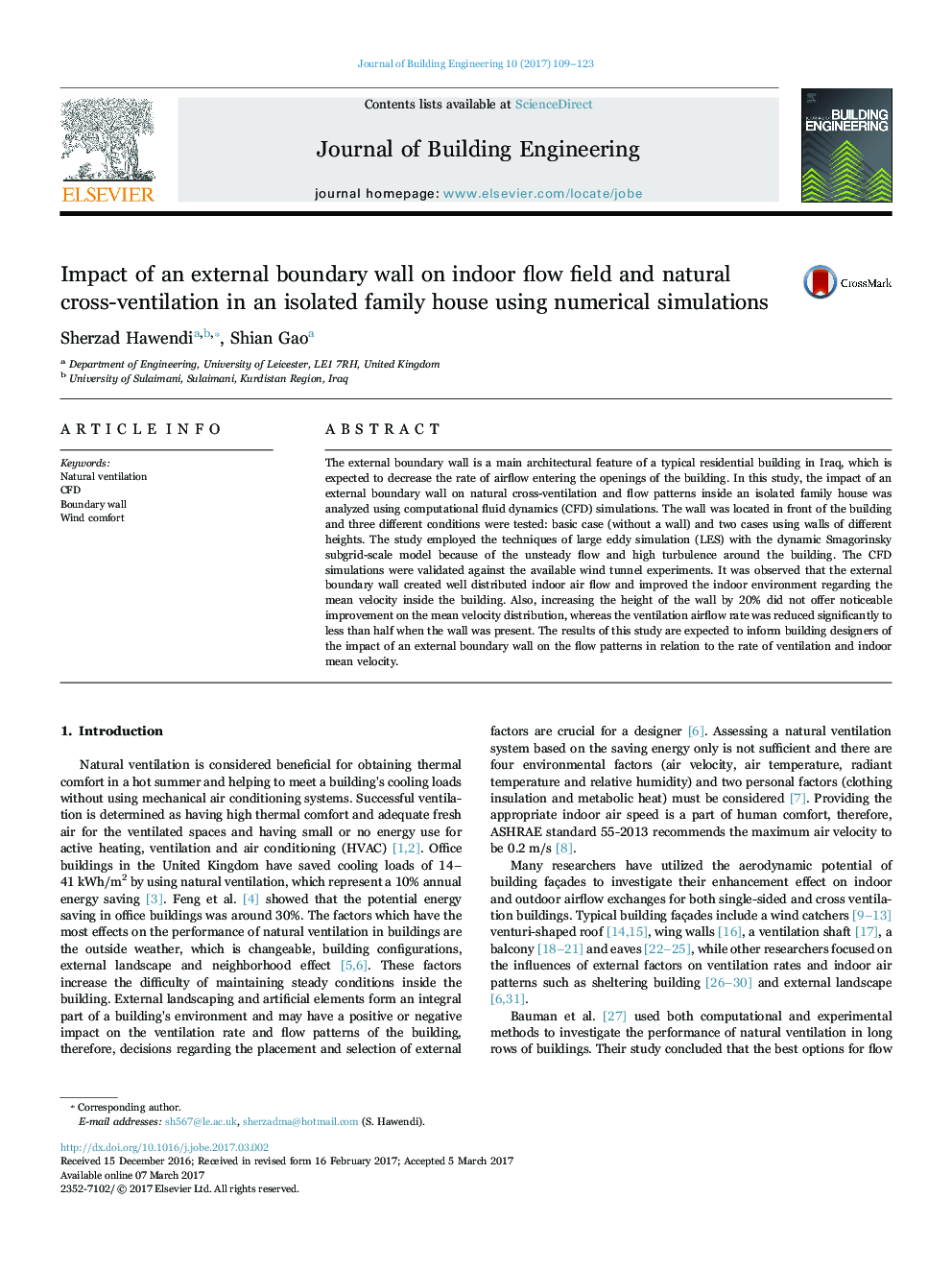| کد مقاله | کد نشریه | سال انتشار | مقاله انگلیسی | نسخه تمام متن |
|---|---|---|---|---|
| 4923098 | 1430638 | 2017 | 15 صفحه PDF | دانلود رایگان |
عنوان انگلیسی مقاله ISI
Impact of an external boundary wall on indoor flow field and natural cross-ventilation in an isolated family house using numerical simulations
ترجمه فارسی عنوان
اثر یک دیوار مرزی خارجی بر روی جریان داخلی و متقابل تهویه طبیعی در یک خانه مجزا از خانواده با استفاده از شبیه سازی های عددی
دانلود مقاله + سفارش ترجمه
دانلود مقاله ISI انگلیسی
رایگان برای ایرانیان
موضوعات مرتبط
مهندسی و علوم پایه
سایر رشته های مهندسی
مهندسی عمران و سازه
چکیده انگلیسی
The external boundary wall is a main architectural feature of a typical residential building in Iraq, which is expected to decrease the rate of airflow entering the openings of the building. In this study, the impact of an external boundary wall on natural cross-ventilation and flow patterns inside an isolated family house was analyzed using computational fluid dynamics (CFD) simulations. The wall was located in front of the building and three different conditions were tested: basic case (without a wall) and two cases using walls of different heights. The study employed the techniques of large eddy simulation (LES) with the dynamic Smagorinsky subgrid-scale model because of the unsteady flow and high turbulence around the building. The CFD simulations were validated against the available wind tunnel experiments. It was observed that the external boundary wall created well distributed indoor air flow and improved the indoor environment regarding the mean velocity inside the building. Also, increasing the height of the wall by 20% did not offer noticeable improvement on the mean velocity distribution, whereas the ventilation airflow rate was reduced significantly to less than half when the wall was present. The results of this study are expected to inform building designers of the impact of an external boundary wall on the flow patterns in relation to the rate of ventilation and indoor mean velocity.
ناشر
Database: Elsevier - ScienceDirect (ساینس دایرکت)
Journal: Journal of Building Engineering - Volume 10, March 2017, Pages 109-123
Journal: Journal of Building Engineering - Volume 10, March 2017, Pages 109-123
نویسندگان
Sherzad Hawendi, Shian Gao,
